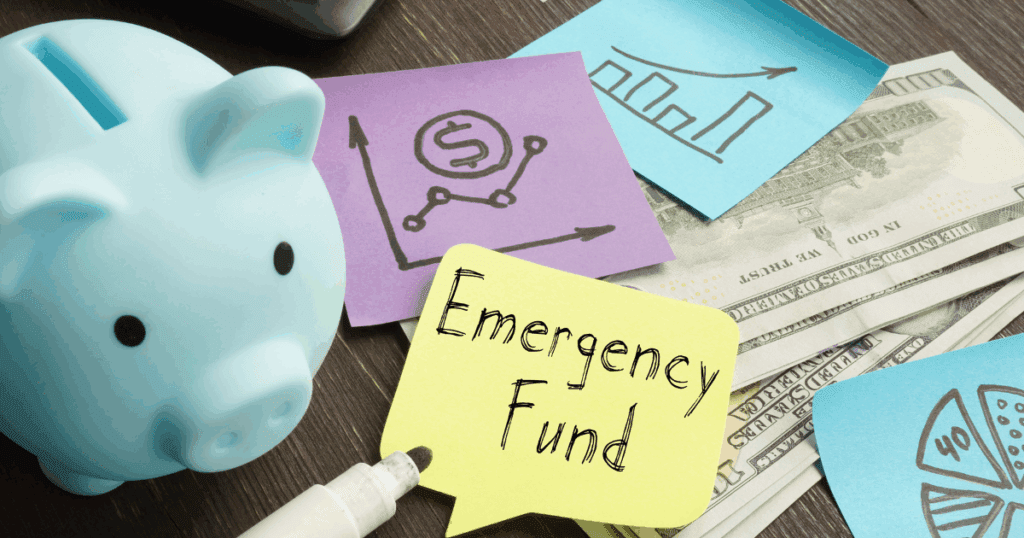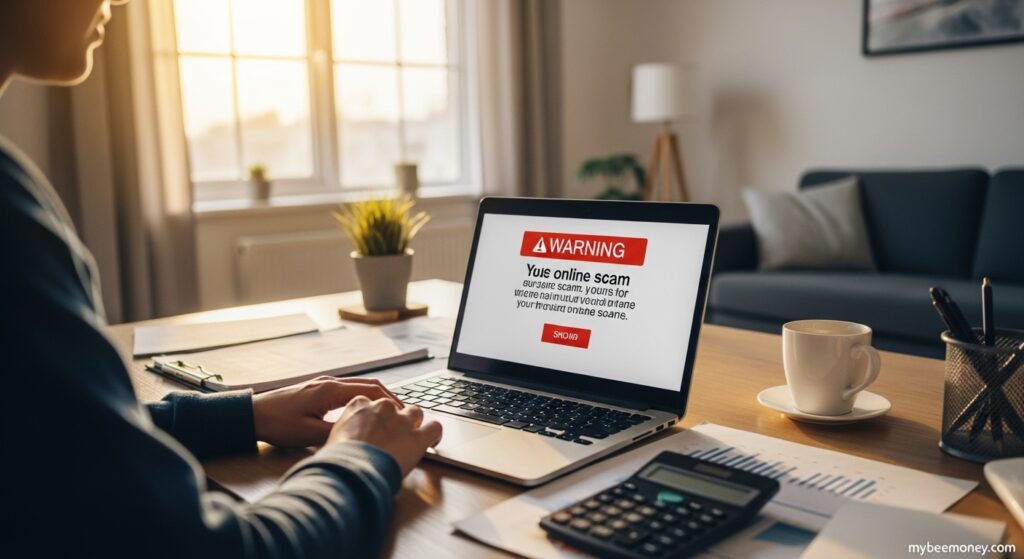
Are you wondering how to build your emergency fund from scratch? This guide will walk you through the essential steps to start saving, explain why an emergency fund is crucial, and share practical tips to help you reach your financial goals faster.
Have you ever found yourself fretting over your finances during an unexpected situation, wishing you had a cushion to fall back on? We’ve all been there at some point. My journey toward building an emergency fund from scratch began in earnest one day when my car decided it had had enough. Sitting in the mechanic’s shop, pondering the hefty repair bill, it hit me—I needed a safety net. This revelation was the catalyst for a transformation in my financial habits. Join me as I share the steps I took to create an emergency fund from scratch, the challenges I faced, and the lessons learned along the way.
Understanding the Importance of an Emergency Fund
Establishing an emergency fund is akin to having a reliable friend who always has your back. It shields you from unforeseen expenses that life inevitably throws your way. Whether it’s a medical emergency, a sudden job loss, or a crucial household repair, this fund provides the security you need to manage life’s surprises without financial panic. Let’s delve into the key elements that underscore the significance of building an emergency fund.
| Unexpected Expense | Potential Cost | Impact Without a Fund |
|---|---|---|
| Car Repairs | $500 – $1,000 | Debt accrual; stress |
| Medical Bills | $200 – $5,000 | Financial strain; postponed treatment |
| Job Loss | Loss of income | Inability to meet basic needs |
| Home Repairs | $300 – $3,000 | Housing instability; increased debt |
Not having an emergency fund can exacerbate these already stressful situations, leading to debt accumulation or even more severe financial burdens. Recognizing this, I committed to setting aside funds to weather any storm, and soon, peace of mind replaced anxiety.
Setting a Realistic Goal
Establishing a realistic and practical goal is fundamental when setting up an emergency fund. Initially, I aimed to save enough to cover at least three to six months of expenses, a standard recommendation by financial advisors. Assessing my monthly expenditures helped in determining a feasible target. The journey began with a modest goal, which gradually expanded as I gained confidence and financial stability. Tracking day-to-day expenses and recalibrating as life changed was essential then, as it continues to be now.
“Financial independence is more than just having money. It’s having freedom and peace of mind.” — Unknown
Maintaining this perspective encourages me to keep focused on my savings journey. Having a realistic and achievable goal not only motivates but also provides a clear path forward, making the seemingly daunting task far more approachable.
Creating a Personalized Budget

Budgeting became the backbone of my efforts to build an emergency fund. Understanding my cash flow allowed me to identify areas to cut back and repurpose those savings into my fund. However, creating a personalized budget required discipline and honesty about my spending habits.
1- Evaluating Expenses: I meticulously listed all my expenses, categorizing them into essentials like rent and groceries, and non-essentials like dining out.
2- Identifying Cutbacks: Upon analysis, I found areas where I could comfortably reduce spending, such as subscription services I rarely used.
3- Allocating Savings: The money saved from these cutbacks was automatically transferred into a high-interest savings account dedicated to my emergency fund.
4- Monitoring Progress: Regularly reviewing my budget ensured I remained on track and motivated to continue saving.
A well-crafted budget not only contributed significantly to my emergency fund but also enhanced my overall financial literacy.
Automating Savings
Automating my savings was a game-changer in the pursuit of building my emergency fund. By setting up automatic transfers from my checking account to my savings account, saving became effortless. Even on tight months, this automation ensured a consistent contribution to my fund, treating it like a non-negotiable expense. This strategy effectively reduced the temptation to skip savings when finances were strained, reinforcing the importance of prioritizing future security over present desires.
Incremental Increases

Once the habit of saving was established, I began increasing my contributions incrementally. Any windfalls, such as tax refunds or bonuses, were directed toward my fund. Additionally, periodic evaluations of my budget revealed additional areas for minor cutbacks, further boosting my savings rate. With time, these incremental increases significantly bolstered my fund, illustrating the power of small yet consistent changes compounded over time.
Overcoming Challenges
Throughout my journey, I faced several challenges that tested my commitment. There were times when unexpected expenses emerged, which momentarily derailed my progress. However, these situations reinforced the necessity of the fund. Perseverance, adaptability, and occasional sacrifices became the tools I used to navigate these obstacles. I learned to anticipate potential challenges and allowed flexibility within my budget to accommodate life’s unpredictabilities without endangering my savings plan.
Leveraging Financial Tools
To streamline my savings process, I explored various financial tools and apps designed to assist in managing personal finances. Applications that tracked my spending, calculated budget forecasts, and provided insights into my saving habits were invaluable. These tools enhanced my ability to make informed financial decisions and maintained my motivation by visually representing my progress.
Maintaining the Fund
Reaching my goal of a well-rounded emergency fund was just the beginning. Maintaining and occasionally replenishing this fund became critical as my life circumstances and financial obligations evolved. Regular assessments of my financial situation ensured that my fund remained sufficient to cover any new potential expenses that might arise. Furthermore, as my income increased, I adjusted my savings goal accordingly, ensuring my fund kept pace with my lifestyle.
Reevaluating Financial Priorities
Building an emergency fund prompted a reevaluation of my broader financial priorities. The discipline required to save consistently instilled a more profound understanding of my financial habits and long-term goals. It also inspired a shift towards broader financial literacy and investment opportunities that I’d previously considered out of reach. This newfound focus on my financial future further solidified the changes I’d made throughout the journey of building my emergency fund.
For more expert advice, see Investopedia’s guide on emergency funds.
FAQ
What is an emergency fund?
An emergency fund is a dedicated savings account meant to cover unexpected expenses such as medical bills, car repairs, or job loss, preventing financial distress.
How much should I save for an emergency fund?
Financial advisors typically recommend saving enough to cover 3 to 6 months of living expenses, but this amount can vary based on individual circumstances.
Where should I keep my emergency fund?
Keeping your emergency fund in a high-interest savings account ensures easy access when needed while earning some interest over time.
How can I start saving if my budget is tight?
Begin with a small, manageable goal and look for areas to reduce spending, such as dining out or subscription services. Gradually increase your savings as your financial situation improves.
What if I need to use my emergency fund?
If you use your emergency fund, prioritize replenishing it as soon as possible to ensure you’re prepared for any future emergencies.
Conclusion
Creating an emergency fund from scratch was an enlightening and transformative process, instilling a sense of financial security I hadn’t experienced before. While the road to achieving this goal was fraught with challenges, every step was a valuable lesson in discipline, perseverance, and the importance of prioritizing my financial well-being. This journey not only provided peace of mind but also laid a solid foundation for a more secure financial future. By sharing my story, I hope to inspire others to embark on their journey toward building an emergency fund, one step at a time.












